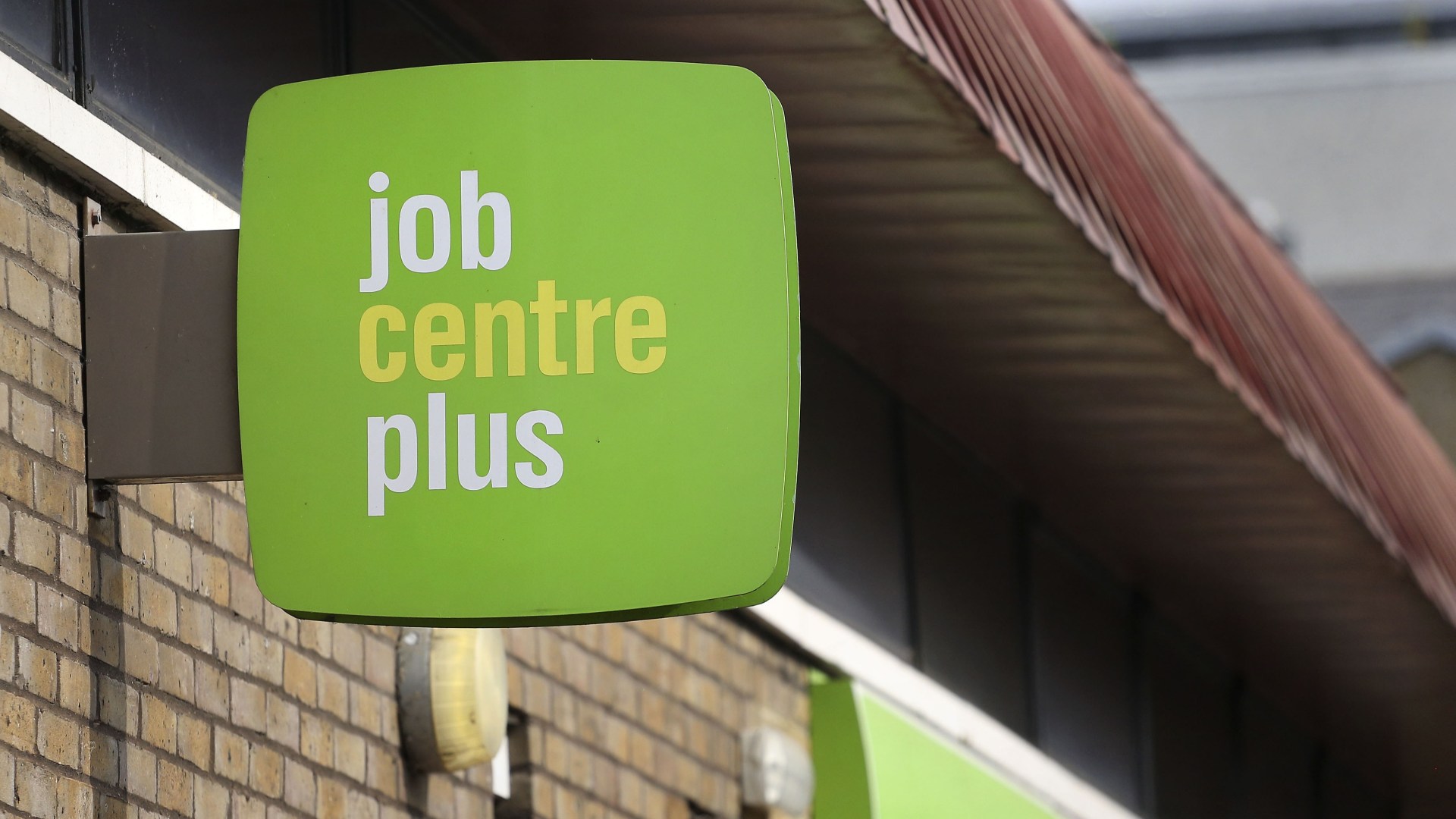Money
UK adults’ retirement confidence drops since 2023


The confidence in UK adults’ ability to have enough capital during retirement has dropped since last year.
This is according to Nucleus UK Retirement Confidence Index which found that overall confidence is 4.6 in 2024 down from 6.9 in 2023.
Nucleus technical services director Andrew Tully said last year the figure was higher than the company expected it to be.
The research from last year has been expanded to include UK adults from the age 18+ whereas last year it was based on adults over 50.
Out of the different age groups, it was the 35-44 and 45-54-year-olds with lowest retirement confidence, 3.7 and 3.8 respectively.
The retirement confidence is split between genders but both have witnessed a drop from last year. Men’s retirement confidence has dropped from 7.2 to 5.1 and women 6.5 to 4.1.
Furthermore, 44% of people do not believe the State Pension will exist in the future. Additionally, 36% of men and 46% of women have no income being contributed to pensions.
The amount of being contributed to defined benefit (DB) pension schemes also declined and was 6.5 down from 7.5 in 2023.
Last year, the report said that the long tail of DB pensions coming to maturity was creating a false confidence among people in or approaching retirement.
The 2023 report rightly predicted that: “This is clearly not sustainable, and we predict the UK Retirement Confidence Index will fall over the next few years as a consequence.”
As well as confidence dropping, peoples targets also seem to fall short. The majority of respondents believe they will need between £20,000 and £30,000 a year for a comfortable retirement.
The Pensions and Lifetime Savings Association (PLSA), however, have said £43,100 is needed a year for a comfortable retirement.
Another factor that has weighed on pension confidence was chancellor Rachel Reeves’ first Budget on 30 October.
Only 2% said they were more positive after the budget with 26% said they were either slightly or much less confident about their financial planning retirement prospects.
This figure increased to 36% for those aged 65+.
This drop in confidence coincides with the amount of seeking financial advice being down 2% points from last year.
The lang cat’s 2024 advice gap research found that only 11% of UK adults have paid for advice.
Tully did call on the Financial Conduct Authority (FCA) to do more to promote advice.
“We need to shout louder about the importance of what advisers and planners do and the value they add.”
Tully did add that another point that came through clearly in the report was the need for financial education.
“Clearly people do not feel that they know enough.”
He added that Martin Lewis did come up a lot as the best person to get help in finance.
Lewis set up MoneySavingExpert.com, a consumer finance website. He is an English financial journalist and host of the Martin Lewis Money Show. He often stresses the information he provides is not regulated financial advice.
In October 2023, LV=’s wealth and wellbeing research programme found 43% of adults turned to websites such as MoneySavingExpert.com for what they considered to be financial advice.
This compared with 38% seeking advice from a qualified adviser.
To obtain these results, Nucleus commissioned YouGov to carry out an online survey of 4,318 UK adults aged 18 and over.
Money
Everything you need to know about disabled persons trusts


The term ‘disabled persons trust’ is frequently used to describe any trust where a beneficiary is deemed vulnerable or disabled. It is not a specific type of trust.
A disabled persons trust can be any discretionary, interest-in-possession or absolute trust. The key is whether the beneficiary’s vulnerability qualifies the trust for income and capital gains tax (CGT) relief or if their disability qualifies the trust for special inheritance tax (IHT) treatment.
So, who qualifies as a vulnerable or disabled beneficiary?
Vulnerable only:
- A child under 18 where at least one parent has died – known as a ‘relevant minor’
Vulnerable and disabled:
- A person with a mental health condition covered by the Mental Health Act 1983
- A disabled person who is eligiblefor any of the following benefits (even if they’re not receiving them): adult disability payment; armed forces independence payment; attendance allowance; child disability payment; constant attendance allowance; disability living allowance (for adults or children); industrial injuries disablement benefit; personal independence payment.
Income tax and CGT relief
Trusts with a vulnerable beneficiary can make a ‘vulnerable beneficiary election’ with HM Revenue & Customs, allowing them to qualify for income tax and CGT relief.
Where the trust has a liability to income or CGT, they may be eligible for a deduction. This is calculated as follows:
- Trustees calculate the trust’s tax liability – using the trust rates of tax and assuming no relief
- Trustees then calculate the tax liability the vulnerable person would have on the same income/capital gains if taxed at their marginal rate.
- The trustees claim the difference between these two figures as a deduction on their tax liability.
The relief only applies if it is the trust which is liable to the tax. For example, a discretionary trust in receipt of interest and dividends. Absolute trusts place the income tax and capital gains liability on the beneficiary directly, so the relief is not necessary.
Higher CGT exemption
Trusts eligible for the vulnerable beneficiary election will have a higher CGT annual exempt amount. This is currently £3,000 (2024/25, usually £1,500), though this allowance may be reduced where the settlor has created multiple trusts.
Trusts which hold investment bonds
Bonds are taxed under chargeable event rules, chargeable gains are tax as income. Under these rules, the settlor of a discretionary or interest in possession trust is liable to income tax on gains arising during their lifetime or tax year of their death. The trustees only have a liability in the following tax years. Even then, the bond can be assigned directly to a beneficiary to be taxed at their marginal rate. Therefore, it may not be necessary for the trustees to make the vulnerable beneficiary election.
If the trust has multiple beneficiaries
If there are beneficiaries who do not qualify as vulnerable, the trustees must segregate assets held for them. The relief only applies for the portion of the trust fund held for the vulnerable beneficiary.
If there is more than one vulnerable beneficiary, the trustees must make an election for each.
Claiming the relief
Trustees must first submit a vulnerable beneficiary election form (VPE1) to HMRC. If there is more than one vulnerable beneficiary, one form must be submitted for each.
Trustees claim the income tax and CGT relief when submitting their annual self-assessment (SA900). Self-assessment must be completed by 31 January following the end of the tax year.
The relief ends on the death of the vulnerable beneficiary, or if they cease to qualify.
Calculating the relief can be complicated, so trustees should consider engaging an accountant. Example calculations are also available from HMRC.
Inheritance tax
A trust may receive special IHT treatment where one of the following applies:
- One or more beneficiary is disabled or has a condition which is expected to make them disabled.
- The trust is a ‘bereaved minors’ trust. This is where one or more of the beneficiary’s parents has died creating a trust in their will (or via the rules of intestacy) for their minor child.
The following special treatment is applied:
- A gift to a disabled persons trust is a potentially exempt transfer regardless of the type of trust used. This means there will be no 20% entry charge for exceeding the nil rate band.
- Trusts will not be subject to the 10-yearly periodic or exit charges.
Restrictions on the trust fund
To qualify, there are restrictions which must be followed:
- For trusts created before 8 April 2013, at least half of the payments from the trust must go to the disabled person during their lifetime.
- For trusts created on or after 8 April 2013, all payments must go to the disabled person. However, up to £3,000 per year (or 3% of the trust’s value, if lower) can be paid to other beneficiaries.
- Trusts of bereaved minors (trusts created by the will of the child’s parent) must pay all assets to the beneficiary on attaining age 18 or before.
While it is possible to use an ‘off the shelf’ draft trust deed, a settlor of a disabled persons trust may choose instead to instruct a legal adviser to draft a bespoke trust document which enforces these restrictions on the trustees.
On death of the beneficiary
Any part of the trust fund held for a disabled beneficiary is treated as part of their estate for the purposes of calculating their IHT liability.
Claiming the special treatment
There is no election or application required for the treatment to apply. However, trustees and settlors are advised to keep good records which can help them demonstrate that the special treatment applies if needed.
Means-tested benefits
A settlor looking to create a trust for a disabled or vulnerable person is likely to be keen not to disrupt any entitlement to means tested benefits. These are benefits where an individual’s capital and income are used to assess whether they are entitled to a benefit and how much they might receive.
Bare trust
Any assets held in a bare trust will be considered for any means-tested benefits the beneficiary claims. This is because the beneficiary has a vested right in the trust fund. There is one notable exception to this; capital and income are excluded from means testing if the trust settled with the award of a personal injury claim for the beneficiary of the trust. The trust must be settled within 12 months of the award.
Discretionary trust
Any assets held within a discretionary trust are not usually considered for means tested benefits as no beneficiary has a vested right in the trust fund. However, any capital or income paid to the beneficiary will be considered in the assessment.
In either case, the position is unchanged if a beneficiary qualifies as a vulnerable or disabled person.
Trust registration
Trusts for disabled beneficiaries or bereaved minors are exempted from registration during the lifetime of the disabled beneficiary. If the trust ceases to qualify for special treatment the trustees must register the trust within 90 days.
Disabled persons trusts:
| Income tax | Capital gains tax | Inheritance tax | Inclusion for means-tested benefits | |
| Bare trust | Beneficiary’s marginal rate | Beneficiary’s marginal rate |
– Beneficiary’s estate for IHT – No entry / periodic / exit charges |
The beneficiary’s share of trust capital and income are included |
|
Discretionary – not eligible for relief |
Rate applicable to trusts* | Rate applicable to trusts* |
– Not within beneficiary’s estate – Entry / periodic / exit charges apply |
Capital and income distributed to the beneficiary only |
|
Discretionary – eligible for relief |
Beneficiary’s marginal rate** | Beneficiary’s marginal rate** |
– Not within beneficiary’s estate – No entry / periodic / exit charges apply |
Capital and income distributed to the beneficiary only |
*Rate applicable to trusts: Income Tax 39.35% (dividend) 45% (all other income). 0% on all income if below £500. Capital Gains 20% annual exempt amount up to £1,500) 2024/25
**Assuming the trust fund is applied for the vulnerable beneficiary.
Rachael Griffin is a tax and financial planning expert at Quilter
Money
Over a quarter of a million households on benefits have payments STOPPED – how to avoid it happening to you

OVER a quarter of a million households have had their benefit payments stopped after failing to act on a key deadline.
New government figures show 318,834 (up from 284,660 reported in August) benefits claimants have lost out by not moving to Universal Credit within an important three-month window.
Two million people on legacy benefits are gradually moving to Universal Credit under a process known as managed migration.
Universal Credit was set up to replace legacy benefits and kicked off in November 2022 after a successful pilot in July 2019.
As part of the process, eligible households on legacy benefits, including tax credits, are sent “migration notices” in the post which tell them how to make the move to Universal Credit as it’s not automatic.
Households must apply for Universal Credit within three months of receiving their managed migration letter.
Failing to do this can result in benefits being stopped.
Between July 2022 and September 30, 2024, the Department for Work and Pensions (DWP) sent almost 1.4 million migration notices.
However, according to the DWP’s latest figures, 318,834 individuals lost their benefits after failing to act on migration notices received between July 2022 and June 2024.
Some 883,944 individuals have since made successful claims for Universal Credit, and another 166,594 are still in the process of transitioning.
Ayla Ozmen, director of policy and campaigns at Z2K, said: “We’re concerned to see that more people have had vital benefit payments stopped as part of the government’s plan to move people on to Universal Credit.
“The government now looks to have moved all disabled people on to Universal Credit by March 2026, and we are worried that more people may miss the deadline and have their benefits stopped, with potentially disastrous results.
“The government needs to ensure that appropriate safeguards are put in place to stop disabled people being left with nothing to live on.”
Experts have previously warned that managed migration poses a risk to vulnerable people who face losing money.
Top bosses at charities, including Mind, The Trussell Trust, Turn2Us and the Money and Mental Health Policy Institute, said in 2022 that around 700,000 with mental health problems, learning disabilities, and dementia could struggle to engage with the process.
More than 20 organisations have called on the government to halt managed migration to fix flaws in the system that could cause those at risk to fall through.
Which benefits are stopping?
UNIVERSAL Credit is replacing six benefits under the old welfare system, commonly called legacy benefits. They are:
- Working tax credit
- Child tax credit
- Income-based jobseeker’s allowance
- Income support
- income-related employment and support allowance
- Housing benefit
If you’re on any of these benefits now, you can choose to move over – but you might not be better off.
You should consider carefully what moving over means for your money, as you can’t move back once you’re on Universal Credit.
Using an online benefits calculator, which is free and easy to use from charities such as Turn2Us and EntitledTo, can help you compare.
You may be moved to Universal Credit if your circumstances change, such as moving home, changing your working hours, or having a baby.
But eventually everyone will be moved over to Universal Credit under the managed migration process.
MANAGED MIGRATION PROGRESS
In January, the government announced the number of migration notices it plans to send out in the coming financial year.
Before this date, the focus was sending migration notices to households claiming tax credits only.
However, 110,000 income support claimants and a further 120,000 claiming tax credits with housing benefit started receiving their letters in April.
Over 100,000 housing benefit-only claimants were contacted in June.
More than 90,000 people claiming employment and support allowance (ESA) along with child tax credits started being asked to switch in July.
Meanwhile, 20,000 claimants on jobseekers allowance (JSA) were contacted in September.
The Sun previously reported that, in August, those claiming tax credits who are over state pension age will be asked to apply for either Universal Credit or pension credit.
It was initially planned that those claiming income-related ESA alone would not be moved until 2028.
However, the DWP brought forward plans to move these households to Universal Credit by the end of 2025.
Since September 2024, 800,000 households have begun receiving letters explaining how to move from ESA to Universal Credit.
HELP CLAIMING UNIVERSAL CREDIT
As well as benefit calculators, anyone moving from tax credits to Universal Credit can find help in a number of ways.
You can visit your local Jobcentre by searching at find-your-nearest-jobcentre.dwp.gov.uk/.
There’s also a free service called Help to Claim from Citizen’s Advice:
- England: 0800 144 8 444
- Scotland: 0800 023 2581
- Wales: 08000 241 220
You can also get help online from advisers at citizensadvice.org.uk/about-us/contact-us/contact-us/help-to-claim/.
Will I be better off on Universal Credit?
ANALYSIS by James Flanders, The Sun’s Chief Consumer Reporter:
Around 1.4million people on legacy benefits will be better off after switching to Universal Credit, according to the government.
A further 300,000 would see no change in payments, while around 900,000 would be worse off under Universal Credit.
Of these, around 600,000 can get top-up payments (transitional protection) if they move under the managed migration process, so they don’t lose out on cash immediately.
The majority of those – around 400,000 – are claiming employment support allowance (ESA).
Around 100,000 are on tax credits, while fewer than 50,000 each on other legacy benefits are expected to be affected.
Those who move voluntarily and are worse off won’t get these top-up payments and could lose cash.
Those who miss the managed migration deadline and later make a claim may not get transitional protection.
The clock starts ticking on the three-month countdown from the date of the first letter, and reminders are sent via post and text message.
There is a one-month grace period after this, during which any claim to Universal Credit is backdated, and transitional protection can still be awarded.
Examples of those who may be entitled to less on Universal Credit include:
- Households getting ESA and the severe disability premium and enhanced disability premium
- Households with the lower disabled child addition on legacy benefits
- Self-employed households who are subject to the Minimum Income Floor after the 12-month grace period has ended
- In-work households that worked a specific number of hours (e.g. lone parent working 16 hours claiming working tax credits
- Households receiving tax credits with savings of more than £6,000 (and up to £16,000)
Either way, if these households don’t switch in the future, they risk missing out on any future benefit increase and seeing payments frozen.
Money
Mortimer Street Capital completes £27.5m commercial refinance facility

MSC was instructed to structure a facility and explore options in the market that included commercial properties, residential assets, land and development sites totalling 11 securities.
The post Mortimer Street Capital completes £27.5m commercial refinance facility appeared first on Property Week.
Money
Jessica Simpson’s $22M Mortgage Moves Amid Split Rumors

Mortgage Mayhem: Jessica Simpson and Eric Johnson’s $22M Loans Amid Money Troubles and Rumored Split
Jessica Simpson and her husband, former NFL star Eric Johnson, have taken out over $22 million in loans on their opulent Hidden Hills mansion, raising questions about the couple’s finances and sparking rumors of a potential split after a decade of marriage. Despite the whispers of financial struggles and relationship troubles, the two have not publicly confirmed any separation or filed for divorce.

jessicasimpson – Instagram
Property records reveal a complex series of financial maneuvers on the home, which Simpson purchased in 2013 from Ozzy and Sharon Osbourne for $11.5 million under her “Dixie Trail Trust.” Initially, in 2015, Simpson and Johnson took out a $7.3 million mortgage on the property with JPMorgan Chase, followed by an $8 million loan in 2017. Additional loans with other lenders — $3.65 million with Platinum Loan Servicing Inc. and $3.04 million with the Bank of Southern California — brought the total loan amount to over $22 million. Although they have continued to meet these loan obligations, the sheer scale of the debt has fueled speculation about the couple’s financial standing.
An Oasis of Luxury in Hidden Hills
Simpson and Johnson’s estate in the celebrity-favored, gated community of Hidden Hills is a stunning example of luxury California real estate. This 13,274-square-foot home, nestled on 2.25 acres of land, boasts an impressive eight bedrooms and 13 bathrooms. Blending Cape Cod-inspired design with contemporary elegance, the home is secluded at the end of a cul-de-sac, offering both privacy and sweeping views of the city and nearby mountains.
The house is built for both entertaining and family life, featuring a grand spiral staircase that makes a memorable first impression. A large family room is warmed by a reclaimed brick fireplace and framed by oversized sliding barn doors, giving the space a rustic, yet refined look. Floor-to-ceiling windows flood the space with natural light, creating a sense of openness and connection to the outdoors.

jessicasimpson – Instagram
The kitchen is truly a chef’s dream, with high-end Wolf appliances, a spacious center island, a walk-in pantry, and a charming breakfast nook where Simpson has shared glimpses of cozy family mornings with her children, Maxwell, Ace, and Birdie. The master suite is a luxurious retreat within the home, complete with a fireplace, a wood-paneled walk-in closet, and an adjacent office for quiet moments or remote work. Outdoor spaces add to the estate’s allure, with expansive lawns, a spa, a shallow pool, and numerous seating areas designed for lounging, socializing, and relaxation. A separate guesthouse provides additional living space, suitable for an office or gym, and a four-car garage adds a practical touch.
Financial Struggles and the Fight to Save Her Brand
Simpson’s financial challenges have become public knowledge over the years, with the singer and entrepreneur candidly discussing her journey to reclaim control of the Jessica Simpson Collection, the billion-dollar brand she co-founded with her mother, Tina, in 2005. The business grew rapidly, becoming a household name and a major force in fashion retail. However, in 2015, Sequential Brands Group acquired a controlling stake in the business, leaving Simpson with a 37.5% ownership share.
In 2021, when Sequential Brands filed for bankruptcy, Simpson was forced to make a difficult decision. Determined to regain full control of her company, she and her mother placed a $65 million bid, a move funded by a mix of loans and family contributions. “I drained everything to buy it back,” Simpson revealed in an interview, explaining the extent of her financial commitment to the business. Her decision meant taking on significant personal financial risk, even to the point of not having a working credit card at one point. “I went to Taco Bell the other day and my card got denied,” she admitted on The Real, highlighting her willingness to prioritize her brand’s future over her own financial comfort.
For Simpson, the choice to regain control of her brand was deeply personal. “With money, there’s just so much fear attached to it,” she said, acknowledging the anxiety that can come with financial instability. Despite these struggles, Simpson has remained resolute, regularly showcasing pieces from her collection on social media and discussing her plans to expand the brand further.

jessicasimpson – Instagram
Rumors of a Rocky Marriage and Separate Lives
Alongside these financial hurdles, Jessica and Eric’s relationship has faced scrutiny, with rumors circulating that the couple may be living separate lives. The two celebrated their 10-year wedding anniversary this year, but Simpson’s failure to acknowledge the milestone on social media fueled speculation about the state of their marriage. Observers noted that she has been spotted without her wedding ring in recent months, and Eric has been noticeably absent from her social media posts. Even during recent family gatherings, such as Easter, the couple appeared together with their children but did not pose side-by-side.
Jessica’s recent post from her Nashville music room, where she announced new music, further hinted at personal challenges. She wrote, “This comeback is personal, it’s an apology to myself for putting up with everything I did not deserve,” a statement that many fans interpreted as a veiled reference to her marriage. Her return to music seems to be both a professional and personal endeavor, a chance for Simpson to reconnect with her passions and redefine herself after years of business and family commitments.
Looking to the Future with Resilience and Renewal
Though Jessica and Eric put their Hidden Hills mansion on the market for $22 million in September 2023, they later removed the listing in August 2024. This move leaves questions about their future — will they remain in Los Angeles, or could they be considering a more permanent move to Nashville, where Simpson has been spending more time and working on new music?
Despite the rumors and financial strains, Simpson’s determination remains clear. She’s shown a fierce commitment to her brand, her family, and her own personal growth. Reflecting on her drive and resilience, she once shared, “I’ll put it all out there if it’s me that’s driving the show, because I believe in myself… And I know that nothing will stop me, and if you try to stop me, I’ll try harder.”

jessicasimpson – Instagram
Her journey has been anything but conventional, marked by financial gambles, a high-profile marriage, and a struggle to maintain her footing in a demanding industry. Simpson’s story is one of both public and private battles, of a woman unafraid to push her limits in pursuit of a vision that’s entirely her own. As she embarks on her latest “personal comeback,” fans and critics alike are watching closely, anticipating what the next chapter holds for the multi-talented star.
Money
AJ Bell reduces charges on multi-asset income range


AJ Bell has reduced ongoing charges across its multi-asset income range, including flagship funds.
The charges for the VT AJ Bell Income Fund and VT AJ Bell Income & Growth Fund have been reduced by 15 basis points.
The reduction from 0.65% to 0.50% came into effect on 1 November.
AJ Bell said its multi-asset income range has delivered strong performance with a five-year total return of 22.51% and 27.58% respectively.
The funds, which were launched in 2019, will now offer a smoothed income profile, with 11 equal monthly income payments and a final balance distribution in month 12.
The wealth manager said the multi-asset income range, alongside its Managed Portfolio Service (MPS), Growth and Responsible investing funds, has formed an important part of its investments business.
The investments business has grown to assets under management of £6.8 bn as of 30 September 2024, up 45% in the year and with inflows of £1.5 bn.
AJ Bell said today’s announcement further evidences its commitment to delivering exceptional value for customers and follows charge reductions on its Investcentre adviser platform earlier this year, with fees cut to between 0.2% and 0.075% and capped on accounts over £2m.
Ryan Hughes, AJ Bell Investments managing director, said: “After another strong year for our investments business, we are very happy to announce a reduction in charges for our range of income funds. We remain committed to passing on economies of scale to our customers as we continue to grow, ensuring we are delivering excellent value investment solutions alongside strong investment returns.
“At the same time, the move to a ‘smoothed income’ approach helps customers using our income funds manage their investment income. As more investors look to rely on investment income in retirement, this approach will make life easier, with a consistent, reliable income enabling better budgeting and cashflow planning.”
Money
What the new ‘pension megafunds’ plan by Rachel Reeves means for YOUR retirement

THE government is set to announce huge plans to create “pension megafunds” in a bid to boost both savers’ retirement pots and investment in the UK.
Chancellor Rachel Reeves will outline the plans to move around £800billion of pension savings into larger so-called “megafunds” in her first annual “Mansion House” speech this evening.
Local government pension schemes, which manage around £400billion of that cash, will be forced to split into eight megafunds.
Eventually, the plan is to then group all other defined contribution (DC) schemes – what most workers save into – into a number of other big funds.
DC schemes are where you and your employer both put money into a scheme and the cash is invested to grow your pot over time.
The plan is to set a minimum amount these funds can have in them – currently touted as somewhere between £25billion and £50billion.
The government is also consulting on allowing fund managers – who manage where all this cash is invested – to move savers from schemes which are under-performing into schemes that will deliver them better value.
The megafund set-up is similar to the pension systems in other countries like Australia and Canada, where pension cash is pooled into huge so-called “superfunds” and invested on behalf of larger groups of savers.
Ms Reeves said the reforms are the biggest change to the pensions market “in decades” that will “boost people’s savings in retirement” and “drive economic growth”.
The government added: “Consolidating the assets into a handful of megafunds run by professional fund managers will allow them to invest more in assets like infrastructure, supporting economic growth and local investment.”
What do the changes mean for your money?
Currently, most workers in the UK are automatically enrolled into their workplace pension scheme.
These are usually DC schemes. The other type of pensions in the UK are “defined benefit” schemes, where workers receive a guaranteed income in retirement based on their years of service.
But “megafunds” will pool a number of workplace pension schemes together to create giant pots of money to invest.
The aim is that by having much larger amounts to invest, the cash returns on those investments will be far higher than having lots of smaller pots.
For example, if you returned 5% on £1,000 in a year, you would earn £50, but if you returned 5% on £100,000 over a year, you would earn £5,000, and so on.
This should mean savers should end up with much larger pots of money by the time they retire.
Having more cash also means investment managers can take more risk with their investments with the aim of achieving higher returns.
Looking at the bigger picture, the government is hoping that these larger pension funds can be used to invest in infrastructure projects, which will ultimately benefit everyone.
Currently, most DC pensions in the UK are too small to invest in any meaningful capacity in infrastructure projects, such as roads, railways or building developments.
But government analysis has found pension funds worth between £25billion and £50billion can achieve much greater “productive investment levels”.
For example, it found Canada’s pension schemes invest around four times more in infrastructure than the UK currently does, while Australia’s pension schemes invest around three times more.
By combining UK schemes, the government estimates it could unlock a whopping £80billion to invest in the country’s infrastructure.
Jon Greer, head of retirement policy at wealth manager Quilter, said that by pooling resources into larger funds, savers will access “high-yield investments that smaller schemes often miss”.
“Drawing inspiration from successful models in Australia and Canada, this approach has the potential to deliver stable returns while supporting meaningful long-term projects,” he added.
However, some pensions industry experts have expressed concern that the government’s main focus is on investing in the UK rather than achieving returns for savers.
Tom Selby, director of public policy at AJ Bell, warned: “Conflating a government goal of driving investment in the UK and people’s retirement outcomes brings a danger because the risks are all taken with members’ money.
“If it goes well, everyone can celebrate – but it’s clearly possible that it will go the other way, so there needs to be some caution in this push to use other people’s money to drive economic growth.”
How do pensions make money?
DEFINED contribution pension cash is pooled together to make money for savers.
Schemes are managed by investment firms, such as Hargreaves Lansdown or Fidelity, and fund managers at those firms decide where to invest savers’ cash to earn as much money as possible.
Over a long period, these returns from investments gradually increase the size of the pot – and as the pot size increases, the amount it can return also increases, as the return is calculated on a larger amount of money.
This is known as “compound interest”.
We have previously revealed how over 40 years, you could save a total of £109,671, while only paying in £40,000 of your own money because of compound interest.
The larger the amount of money is that’s invested, the higher the returns can be in cash-terms for savers.
-

 Science & Environment2 months ago
Science & Environment2 months agoHow to unsnarl a tangle of threads, according to physics
-

 Technology2 months ago
Technology2 months agoWould-be reality TV contestants ‘not looking real’
-

 Technology2 months ago
Technology2 months agoIs sharing your smartphone PIN part of a healthy relationship?
-

 Science & Environment2 months ago
Science & Environment2 months agoHyperelastic gel is one of the stretchiest materials known to science
-

 Science & Environment2 months ago
Science & Environment2 months agoX-rays reveal half-billion-year-old insect ancestor
-

 Science & Environment2 months ago
Science & Environment2 months ago‘Running of the bulls’ festival crowds move like charged particles
-

 Science & Environment2 months ago
Science & Environment2 months agoPhysicists have worked out how to melt any material
-

 MMA1 month ago
MMA1 month ago‘Dirt decision’: Conor McGregor, pros react to Jose Aldo’s razor-thin loss at UFC 307
-

 News1 month ago
News1 month ago‘Blacks for Trump’ and Pennsylvania progressives play for undecided voters
-

 News1 month ago
News1 month agoWoman who died of cancer ‘was misdiagnosed on phone call with GP’
-

 Money1 month ago
Money1 month agoWetherspoons issues update on closures – see the full list of five still at risk and 26 gone for good
-

 Sport1 month ago
Sport1 month agoAaron Ramsdale: Southampton goalkeeper left Arsenal for more game time
-

 Football1 month ago
Football1 month agoRangers & Celtic ready for first SWPL derby showdown
-

 Sport1 month ago
Sport1 month ago2024 ICC Women’s T20 World Cup: Pakistan beat Sri Lanka
-

 Science & Environment2 months ago
Science & Environment2 months agoA new kind of experiment at the Large Hadron Collider could unravel quantum reality
-
Business1 month ago
how UniCredit built its Commerzbank stake
-

 Science & Environment2 months ago
Science & Environment2 months agoMaxwell’s demon charges quantum batteries inside of a quantum computer
-

 Science & Environment2 months ago
Science & Environment2 months agoSunlight-trapping device can generate temperatures over 1000°C
-

 Science & Environment2 months ago
Science & Environment2 months agoLiquid crystals could improve quantum communication devices
-

 Science & Environment2 months ago
Science & Environment2 months agoQuantum forces used to automatically assemble tiny device
-

 Science & Environment2 months ago
Science & Environment2 months agoLaser helps turn an electron into a coil of mass and charge
-

 Technology2 months ago
Technology2 months agoUkraine is using AI to manage the removal of Russian landmines
-
Business1 month ago
Top shale boss says US ‘unusually vulnerable’ to Middle East oil shock
-

 Technology1 month ago
Technology1 month agoSamsung Passkeys will work with Samsung’s smart home devices
-

 MMA1 month ago
MMA1 month agoPereira vs. Rountree prediction: Champ chases legend status
-

 News1 month ago
News1 month agoNavigating the News Void: Opportunities for Revitalization
-

 Science & Environment2 months ago
Science & Environment2 months agoQuantum ‘supersolid’ matter stirred using magnets
-

 Technology2 months ago
Technology2 months agoRussia is building ground-based kamikaze robots out of old hoverboards
-

 Science & Environment2 months ago
Science & Environment2 months agoWhy this is a golden age for life to thrive across the universe
-

 News1 month ago
News1 month agoMassive blasts in Beirut after renewed Israeli air strikes
-

 Technology1 month ago
Technology1 month agoGmail gets redesigned summary cards with more data & features
-

 News1 month ago
News1 month agoCornell is about to deport a student over Palestine activism
-

 Technology1 month ago
Technology1 month agoSingleStore’s BryteFlow acquisition targets data integration
-

 Technology2 months ago
Technology2 months agoMicrophone made of atom-thick graphene could be used in smartphones
-

 Sport1 month ago
Sport1 month agoBoxing: World champion Nick Ball set for Liverpool homecoming against Ronny Rios
-

 Sport1 month ago
Sport1 month agoShanghai Masters: Jannik Sinner and Carlos Alcaraz win openers
-

 Entertainment1 month ago
Entertainment1 month agoBruce Springsteen endorses Harris, calls Trump “most dangerous candidate for president in my lifetime”
-

 Money1 month ago
Money1 month agoTiny clue on edge of £1 coin that makes it worth 2500 times its face value – do you have one lurking in your change?
-

 Technology1 month ago
Technology1 month agoEpic Games CEO Tim Sweeney renews blast at ‘gatekeeper’ platform owners
-

 Business1 month ago
Business1 month agoWater companies ‘failing to address customers’ concerns’
-

 MMA1 month ago
MMA1 month agoPennington vs. Peña pick: Can ex-champ recapture title?
-

 Technology2 months ago
Technology2 months agoMeta has a major opportunity to win the AI hardware race
-

 Science & Environment2 months ago
Science & Environment2 months agoITER: Is the world’s biggest fusion experiment dead after new delay to 2035?
-

 MMA1 month ago
MMA1 month agoDana White’s Contender Series 74 recap, analysis, winner grades
-

 MMA1 month ago
MMA1 month agoKayla Harrison gets involved in nasty war of words with Julianna Pena and Ketlen Vieira
-

 Sport1 month ago
Sport1 month agoAmerica’s Cup: Great Britain qualify for first time since 1964
-

 Technology1 month ago
Technology1 month agoMicrosoft just dropped Drasi, and it could change how we handle big data
-

 Technology1 month ago
Technology1 month agoLG C4 OLED smart TVs hit record-low prices ahead of Prime Day
-

 Sport1 month ago
Sport1 month agoWXV1: Canada 21-8 Ireland – Hosts make it two wins from two
-

 Science & Environment2 months ago
Science & Environment2 months agoNuclear fusion experiment overcomes two key operating hurdles
-

 News2 months ago
News2 months ago▶️ Hamas in the West Bank: Rising Support and Deadly Attacks You Might Not Know About
-

 Technology2 months ago
Technology2 months agoWhy Machines Learn: A clever primer makes sense of what makes AI possible
-

 News1 month ago
News1 month agoHarry vs Sun publisher: ‘Two obdurate but well-resourced armies’
-

 MMA1 month ago
MMA1 month ago‘Uncrowned queen’ Kayla Harrison tastes blood, wants UFC title run
-
Travel1 month ago
World of Hyatt welcomes iconic lifestyle brand in latest partnership
-
Business1 month ago
It feels nothing like ‘fine dining’, but Copenhagen’s Kadeau is a true gift
-

 Football1 month ago
Football1 month ago'Rangers outclassed and outplayed as Hearts stop rot'
-

 Sport1 month ago
Sport1 month agoNew Zealand v England in WXV: Black Ferns not ‘invincible’ before game
-

 Science & Environment2 months ago
Science & Environment2 months agoNerve fibres in the brain could generate quantum entanglement
-

 Technology2 months ago
Technology2 months agoUniversity examiners fail to spot ChatGPT answers in real-world test
-

 Sport1 month ago
Sport1 month agoURC: Munster 23-0 Ospreys – hosts enjoy second win of season
-

 News2 months ago
News2 months agoRwanda restricts funeral sizes following outbreak
-

 Technology1 month ago
Technology1 month agoCheck, Remote, and Gusto discuss the future of work at Disrupt 2024
-

 TV1 month ago
TV1 month agoসারাদেশে দিনব্যাপী বৃষ্টির পূর্বাভাস; সমুদ্রবন্দরে ৩ নম্বর সংকেত | Weather Today | Jamuna TV
-
Business1 month ago
Italy seeks to raise more windfall taxes from companies
-
Business1 month ago
The search for Japan’s ‘lost’ art
-

 Sport1 month ago
Sport1 month agoPremiership Women’s Rugby: Exeter Chiefs boss unhappy with WXV clash
-
Politics1 month ago
‘The night of the living dead’: denial-fuelled Tory conference ends without direction | Conservative conference
-

 Technology1 month ago
Technology1 month agoNintendo’s latest hardware is not the Switch 2
-

 Science & Environment2 months ago
Science & Environment2 months agoA tale of two mysteries: ghostly neutrinos and the proton decay puzzle
-

 MMA1 month ago
MMA1 month agoStephen Thompson expects Joaquin Buckley to wrestle him at UFC 307
-

 Business1 month ago
Business1 month agoWhen to tip and when not to tip
-

 News1 month ago
News1 month agoHull KR 10-8 Warrington Wolves – Robins reach first Super League Grand Final
-

 MMA1 month ago
MMA1 month agoHow to watch Salt Lake City title fights, lineup, odds, more
-

 Sport1 month ago
Sport1 month agoHow India became a Test cricket powerhouse
-

 Sport1 month ago
Sport1 month agoSnooker star Shaun Murphy now hits out at Kyren Wilson after war of words with Mark Allen
-

 Sport1 month ago
Sport1 month agoFans say ‘Moyes is joking, right?’ after his bizarre interview about under-fire Man Utd manager Erik ten Hag goes viral
-

 News1 month ago
News1 month agoCrisis in Congo and Capsizing Boats Mediterranean
-

 Money1 month ago
Money1 month agoThe four errors that can stop you getting £300 winter fuel payment as 880,000 miss out – how to avoid them
-

 TV1 month ago
TV1 month agoTV Patrol Express September 26, 2024
-

 Science & Environment2 months ago
Science & Environment2 months agoA slight curve helps rocks make the biggest splash
-

 News2 months ago
News2 months ago▶️ Media Bias: How They Spin Attack on Hezbollah and Ignore the Reality
-

 Science & Environment2 months ago
Science & Environment2 months agoHow to wrap your mind around the real multiverse
-

 News1 month ago
News1 month agoUK forces involved in response to Iran attacks on Israel
-

 Football1 month ago
Football1 month agoFifa to investigate alleged rule breaches by Israel Football Association
-

 Football1 month ago
Football1 month agoWhy does Prince William support Aston Villa?
-

 News1 month ago
News1 month ago▶ Hamas Spent $1B on Tunnels Instead of Investing in a Future for Gaza’s People
-

 Technology1 month ago
Technology1 month agoSamsung Galaxy Tab S10 won’t get monthly security updates
-

 Technology1 month ago
Technology1 month agoMusk faces SEC questions over X takeover
-

 Sport1 month ago
Sport1 month agoChina Open: Carlos Alcaraz recovers to beat Jannik Sinner in dramatic final
-

 Sport1 month ago
Sport1 month agoBukayo Saka left looking ‘so helpless’ in bizarre moment Conor McGregor tries UFC moves on Arsenal star
-

 Sport1 month ago
Sport1 month agoPhil Jones: ‘I had to strip everything back – now management is my focus’
-

 Sport4 weeks ago
Sport4 weeks agoSunderland boss Regis Le Bris provides Jordan Henderson transfer update 13 years after £20m departure to Liverpool
-

 TV1 month ago
TV1 month agoএই ডিভাইস দিয়ে দেখা যায় পৃথিবীর সব টিভি চ্যানেল! | Smart Tv Box | Independent TV
-
Business1 month ago
Bank of England warns of ‘future stress’ from hedge fund bets against US Treasuries
-

 Technology1 month ago
Technology1 month agoJ.B. Hunt and UP.Labs launch venture lab to build logistics startups
-

 Money1 month ago
Money1 month agoDWP reveals exact date that cold weather payments will start this winter – can you get free cash for your energy bills?
-

 Sport1 month ago
Sport1 month agoSturm Graz: How Austrians ended Red Bull’s title dominance
-

 Money1 month ago
Money1 month agoFive benefits changes the Government could make next month in its Autumn Budget – from PIP to fraud crackdown
-

 MMA1 month ago
MMA1 month ago‘I was fighting on automatic pilot’ at UFC 306


You must be logged in to post a comment Login